Part I – Region, History, Classifications and Trade Structure
Burgundy is one of the oldest and finest wine producing regions of the world. It is the spiritual home for both the Chardonnay and Pinot Noir grape varieties and has multiple delimited vineyards which set wine aficionados purring with delight. Names such as “Montrachet”, “Chambertin”, “Musigny”, “Vosne-Romanée” are associated with some of the finest, rarest, and most expensive wines on the planet.
The good news is that despite the eye watering prices which these top wines now command, there is plenty of diversity and accessibility to other Burgundies which we can all afford and enjoy, delivering authenticity and a real sense of place.
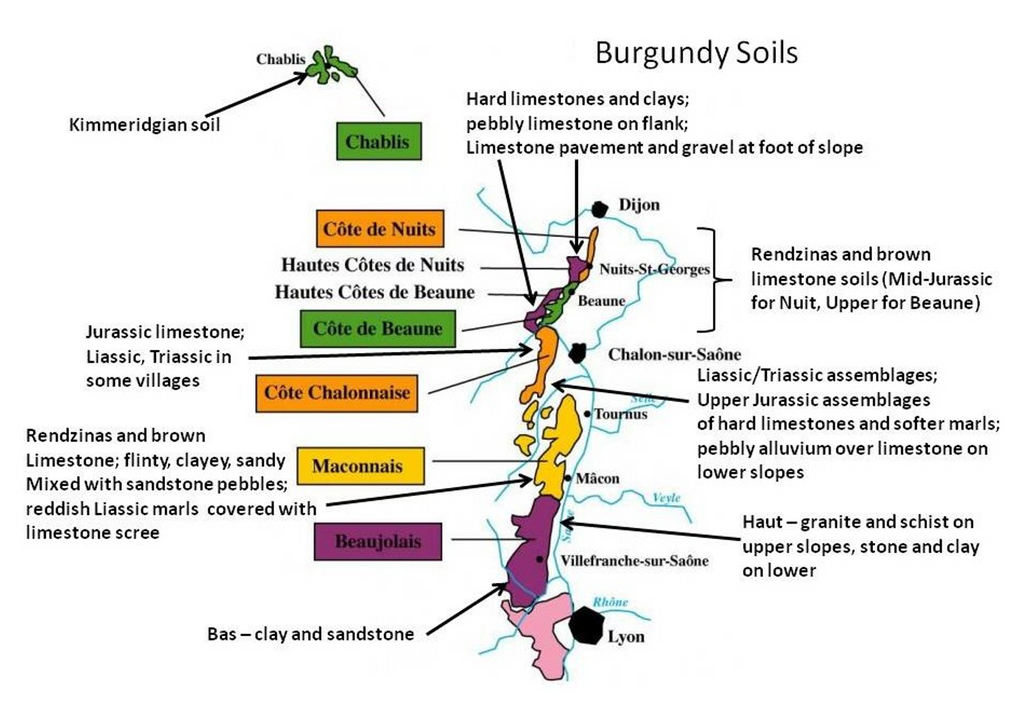
Technically Burgundy is from Chablis in the northwest to Beaujolais in the far south, including the important regions of the Côte d’Or (consisting of Côte de Nuits and Côte de Beaune), Chalonnaise and Mâconnais. The AOC, overall, was formally established on 30 July 1935.
The region is characterised by being relatively small overall, and amazingly fragmented into a multitude of individual Appellations. These were defined historically around a Village or Commune which was then further sub divided into individual vineyard plots within the Village – each one having subtle variations in character, aromas, and flavours. This is the very essence of the French concept of “Terroir”.
Burgundy has the highest number of AOCs of any French wine region and is often cited as the most “terroir aware”, or sensitive, of all areas – especially given that there is a constant reference in that the wines are all single varietals – whether white or red.
I can vouch from personal experience just how pertinent this is from working over many years with Domaine Comte Georges de Vogüé in the village of Chambolle-Musigny. With every vintage the differences between their wines from different vineyards within the village – notably Musigny, Bonnes Mares, and Amoureuses were clearly and consistently marked. This despite being made from the same grape (Pinot Noir), roughly vines of the same age, the same winemaker, and the same winemaking and aging regime.
Burgundy in Summary
The climate is continental, with hot dry summers and cold winters, but the region is highly prone to hailstorms in the late summer and spring frosts. It has been particularly badly hit with frosts in recent years. I also well remember one vigneron telling me that in both 2013 and 2014 he had one of his vineyards crops wiped out by hail in both years (had he not taken out insurance his losses would have been crippling).
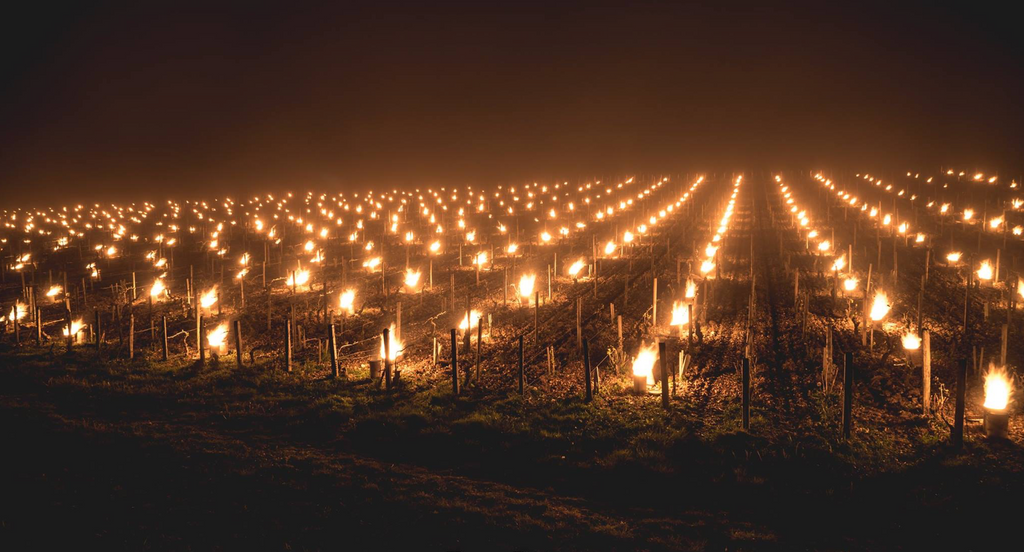
Emergency measures in Chablis to counter spring frosts
Overall, there are just over 150 AOCs from 26,500 hectares, mainly on clay, marl, and limestone soils. Production is roughly 59% white, 34% red and 7% sparkling. There are well over 3,000 grower-domaines so it is no surprise that average holdings are tiny in many cases. Many of these are farmers who grow grapes to sell onto Négociants who make the wine. Today there are around 115 négociants in Burgundy. “Domaines” and growers own 67% of the land but make only 25% of the total wine production. The largest “producer” in Burgundy is Louis Latour at around about 350,000 cases pa to put into perspective.
The relative rarity of high quality wines from top producers, sourced from delimited vineyard areas, has fuelled the steepling rise in price as demand remains insatiable. Many top wines and estates are only available via allocation. This has been exaggerated by recent climatic problems – late frost and hail – which have dramatically reduced production – such as in 2013, 2014, 2016,2021 (paltry) although the trio of 2018, 2019, 2020 have been excellent vintages if not always large in quantity. By far the most important sub district is the Côte d’Or - which is split into two areas - the Côte de Nuits and Côte de Beaune. These tiny areas are barely 30 miles long and no more than 1.2 miles wide. Here legendary and revered vineyards and top producer names grab world headline news, reputations, and prices at auction. However, this does not mean you cannot source at quality white and red Burgundy at affordably “treat” prices.
Brief History
Vines have been grown for well over 1,500 years. Cistercian monks created the largest single (still walled) vineyard – Clos de Vougeot – in 1336. They were the first vineyard owners to start recording differences between wines from different vineyard areas. The wines were well known by the 14th century and were further promoted by the House of Valois, which ruled as Dukes of Burgundy in the 14th and 15th century. Pinot Noir was first mentioned in 1370. Operating as a separate country from France the first major Burgundy “houses” were established in the early 18th century and the region courted the monarchy and lucrative Paris market making the name even more famous. After incorporating back into the kingdom of France the French revolution and subsequent (Napoleonic) inheritance laws saw the gradual fragmentation of land ownership and unintentional creation of the small estates – or Domaines – specialising in more select village only wines, and with these, indirectly, the development of négociant houses.
In 1855 Dr. Jules Lavalle published the first authoritative work on the vineyards of Burgundy called Histoire et Statistique de la Vigne de Grands Vins de la Côte d’Or in which he classified 5 layers of quality by vineyard. This became the foundation for Burgundy’s 1861 classification (in 3 layers) as established by the Beaune Committee of Agriculture. Perceptibly the majority of Lavalle’s “First Class” vineyards were later formally classified as Grand Crus in the National AOC legislation of 1936.
After the depression of the 1930s and Second World War it took until the 1960s for Burgundy to re-establish itself – led by increased focus on yields in the vineyard. The average yield rose from 29hl/ha in 1951 to 48hl/ha in 1982, which had a detrimental effect on quality.
It was from 1985 that the modern renaissance of Burgundy really took hold. Reduced levels of artificial fertiliser; switching to more qualitative based clonal selection; increased investment and technology in the cellars all combined to lead into what is now described as a “golden era” which has lasted right up to today.
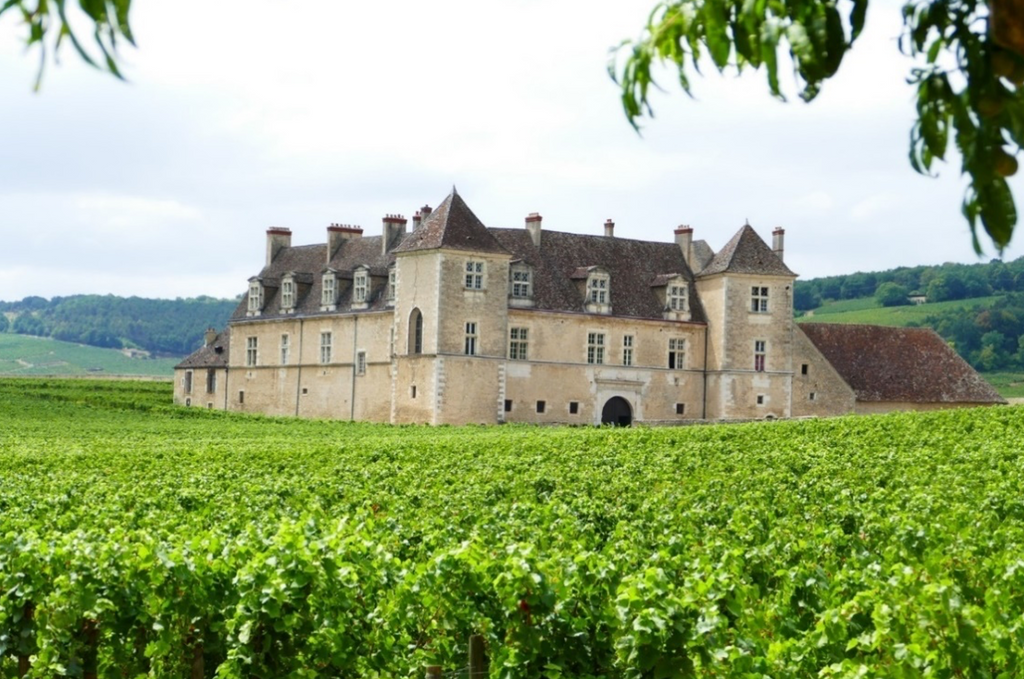
The famous Château at Clos du Vougeot
Classifications
In Burgundy, these are geographically focused as against the Bordeaux system which is producer focused. Grand Crus are also their own AOC’s, again a major difference versus the Bordeaux regime. Premier Crus are still referenced to the overall Village AOC and may be cross blended in a cuvée (which Grand Crus cannot). Production ceilings on Grand Cru are 35hl/ha, whilst Premier Crus are 45hl/ha. Villages make up 36% or production and can crop up to 50hl/ha. Generic and regional Burgundy can crop at 55hl/ha. Please note that these yield ceilings are significantly lower than average Bordeaux Grand Cru Classé examples.
The Grand Crus of the Côte d’Or run like a vein though the central part of the elevated slopes running north to south. The lower, flatter, and siltier soil land is where the generic and lower village vineyard examples are found. The highest land is often too cool and close to woodlands which affect the quality of grapes. The Premier Cru vineyards act like the bread in a sandwich, with the filling being the Grand Crus.
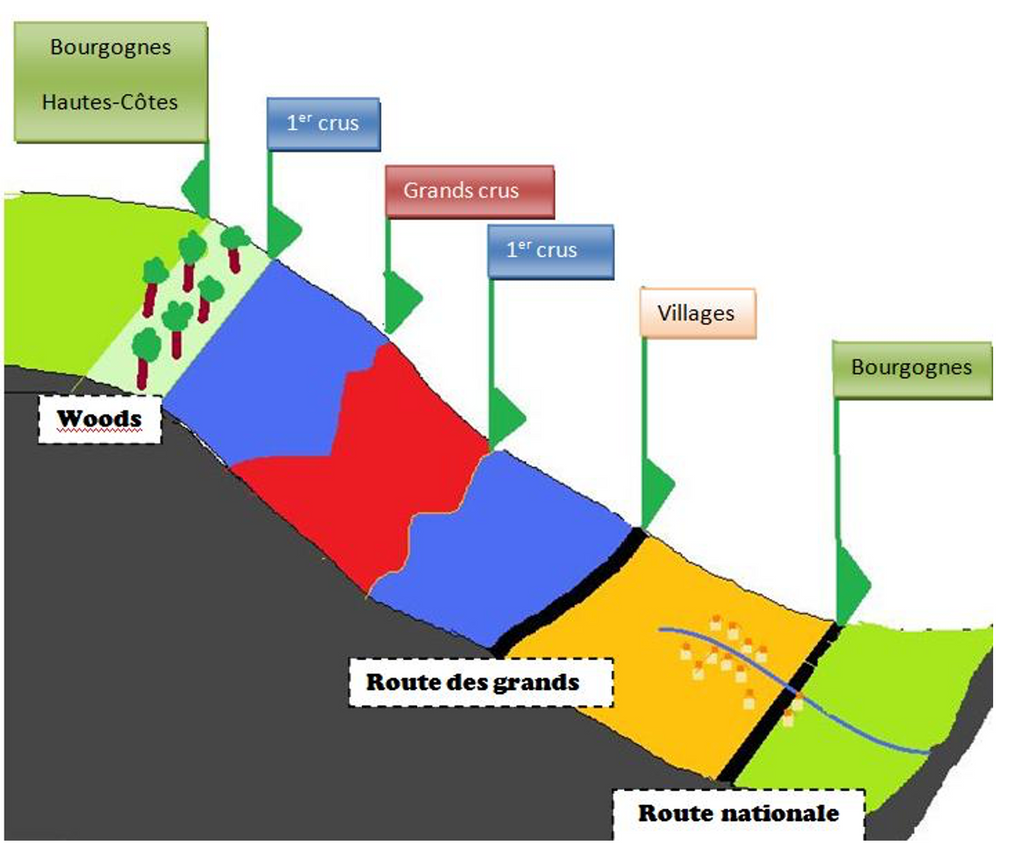
All of Burgundy (apart from Beaujolais) has the same quality hierarchy in 4 main tiers:
- Regional or generic – eg Bourgogne or Côte de Nuits Villages, for example – 51% production
- Villages – eg Gevrey Chambertin – 37% production
- Premier Cru – eg Gevrey Chambertin Clos St. Jacques – 640 climats - 5% production
- Grand Cru – eg Le Chambertin – 33 AOCs - 5% production
Chablis
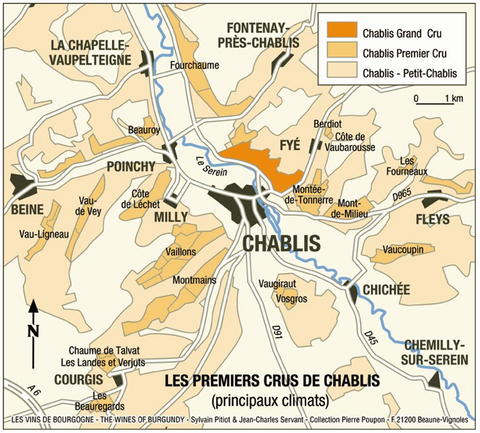 There is one Grand Cru vineyard in Chablis (split into 7 sub sections – or “climats”). There are 40 Premier Crus vineyards in the region which can deliver exceptional value for money in good years from top producers. Montée de Tonnerre (to the right of the Grand Crus) is broadly considered to be the finest Premier Cru. This region is the coolest in all Burgundy and only grows the Chardonnay grape (there is no Pinot Noir). It often said to produce the “crispest” or steeliest” style of white Burgundy as a result. This characteristic is amplified by the fact that oak is used much more sparingly in general in Chablis than other white Burgundy regions.
There is one Grand Cru vineyard in Chablis (split into 7 sub sections – or “climats”). There are 40 Premier Crus vineyards in the region which can deliver exceptional value for money in good years from top producers. Montée de Tonnerre (to the right of the Grand Crus) is broadly considered to be the finest Premier Cru. This region is the coolest in all Burgundy and only grows the Chardonnay grape (there is no Pinot Noir). It often said to produce the “crispest” or steeliest” style of white Burgundy as a result. This characteristic is amplified by the fact that oak is used much more sparingly in general in Chablis than other white Burgundy regions.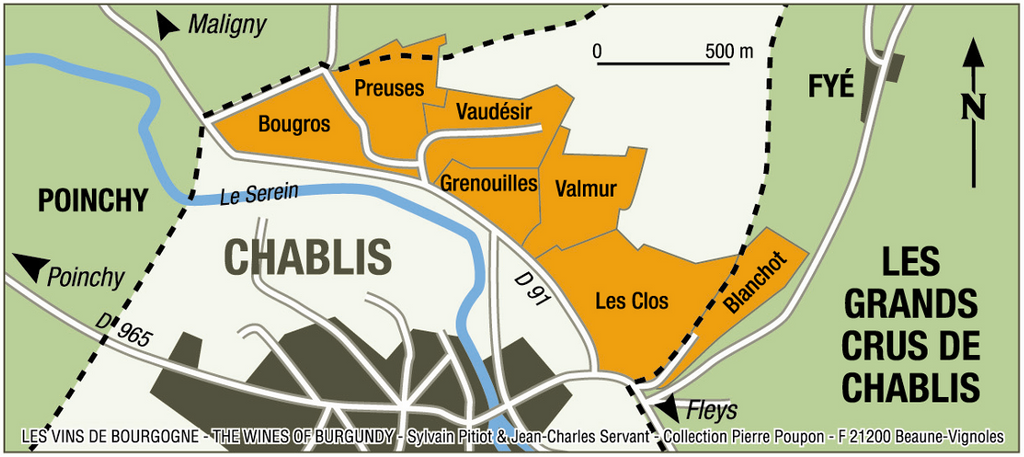
Côte d’Or
All the other Grand Crus are found in the Côte d’Or, split between the Côte de Nuits and Côte de Beaune. These include world famous vineyards such as Corton-Charlemagne, Chevalier, and Le Montrachet (Chardonnay), and Chambertin, Musigny, La Tâche, and Romanée-Conti (Pinot Noir).
The Côte d’Or is revered as the heartland of Burgundy (both red and white). There are 32 Grand Crus – 8 alone in village of Gevrey-Chambertin. In the Côte de Nuits, all the Grand Crus – except one – are for red wine. In the Côte de Beaune, there is one red Grand Cru (Corton) and six white – the most famous of which is Le Montrachet. In addition, there are 135 Premier Crus in the Côte de Nuits and over 300 in the Côte de Beaune. There are certain Premier Crus which are regarded as being the equal of the Grand Crus – eg Clos St Jacques in Gevrey-Chambertin, Malconsorts in Vosne-Romanée, and Amoureuses in Chambolle-Musigny and some of these Premier Crus have petitioned to be promoted, most notably in the Côte de Beaune in Pommard and Volnay. One success story was the promotion of La Grande Rue in Vosne-Romanée to Grand Cru (from the 1991 vintage).
Hautes Côte de Beaune, Hautes Côte de Nuits and “Declassifications”
The two Hautes Côtes are, in simple terms, from vineyards just outside the main AOCs and Villages – usually the higher land above these appellations. They cover the production of white, rosé, and red wines. They can still be very good in terms of quality and style and at much more affordable prices. Also look out for good producers declassified wines. These estates may decide to declassify wines from younger vines for example, or across multiple vineyards. These can be really good and you get the chance to try a wine from a top producer and excellent provenance.
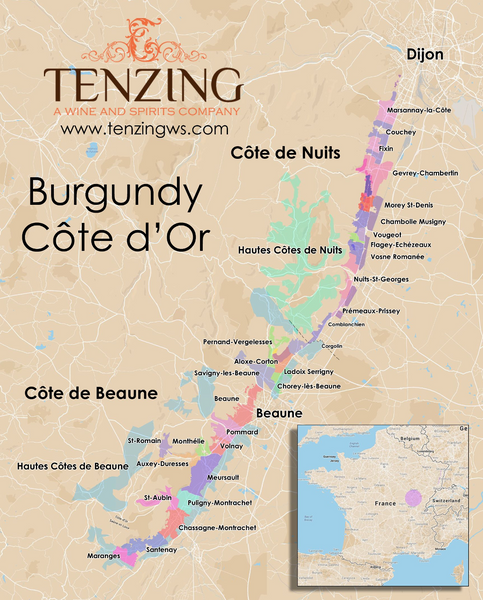
Beaujolais
By contrast, In Beaujolais there are three tiers:
- Regional or generic (mainly from the south of the region)
- Beaujolais Villages (mainly from the central part of the region)
- Cru Beaujolais (the top 10 superior named Villages which lead by their own name only (all in the northern part). Top Crus included Moulin-à-Vent, Morgon and Fleurie
Most of Beaujolais is red, made by law from the Gamay grape. This grape has naturally low levels of tannin and is very fruity, so these wines are very accessible and easy drinking and can often be drunk literally when released. There is a small amount of white Beaujolais - made from the Chardonnay grape.
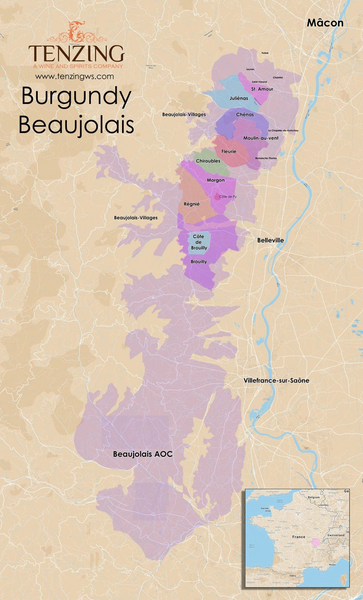
Chalonnaise
The Chalonnaise is home to some of the best value for money Burgundies (especially whites) and there are 5 main sub regions
- Bouzeron – uniquely an AOC solely for the other white grape of Burgundy – Aligoté
- Rully – white (Chardonnay) and red production
- Mercurey – white and red
- Givry – white and red
- Montagny – white only (Chardonnay)
There are no Grand Crus in the Chalonnaise but plenty of very good Premier Crus. The region is also one of France’s gastronomic centres with an abundance of Michelin * restaurants.

Mâconnais
The Mâconnais (including St. Véran, Poulliy Fuissé, Pouilly sur Loche etc) is a white wine production area. Compared with Chablis to the north this region can be 1 to 1.5°C warmer in growing season which result in a riper, creamier style of Burgundy. There are no Grand Crus and until recently there weren’t any Premier Crus but now there are Premier Cru sites (22 in total) in the sub district of Pouilly Fuissé. This area is rightly considered to be the finest district in the Mâconnais - and wines from top producer in good years, can challenge the famous wines of the Côte de Beaune at village level. Overall, they can be classical and deliver some of the best quality for money styles in Burgundy.

Structure of Burgundy Trade
There are 3 main tiers of operators in the region
- Growers & Domaines
- Negociants
- Co-operatives
Due to the small production area and fragmentation of ownership holdings (via the French Inheritance Laws) many Growers own such small vineyard plots that it is uneconomic for them to make wine from these. Over the generations they sold their grapes onto bigger operators - called Negociants – who created a full portfolio offering of white and red Burgundy from a broad cross section of AOC origins.
However, some growers are large enough to both grown their own grapes and make their own wine – these are called Domaines. They are specialist, usually high quality, producers who are expert and focused in much smaller areas – maybe even just one Village. They have driven the image and quality badge for the whole region. This has been exaggerated by the fact that, inevitably, production is also small, so the rarity aspect further exacerbates the demand for wine and building of reputations. Some very famous Domaines in Burgundy include Domaine Leflaive in Puligny Montrachet, Domaine Coche-Dury in Meursault, Armand Rousseau in Gevrey-Chambertin, and Domaine de la Romanée-Conti in Vosne-Romanée. These high-flying estates command very high prices for their wines (all are sold on allocation). However, there are several new and more accessible white Domaines appearing in the market which is good news for the drinker.
Negociants may also be vineyard owners (ie Domaines) in their own right but their production is so large and diverse that they also have to source grapes and wine from other growers and winemakers to maintain their portfolio offering. It is wrong therefore to assume that Negociants cannot compete on quality grounds with Domaines – they can - and sometimes are more consistent as they can be “pickier” in the marketplace. A good example of these is Maison de Montille.
Co-operatives really took off in the 1930s in Burgundy. The logic here is that smaller growers pool their resources and expertise into one production and administrative centre and then sell their products in the market under their own or the Co-op name. This allows them to be both competitive but also have some volume mass and marketing resource to support sales drives. They are particularly strong and effective today in Chablis and Mâconnais – both good sources of value for money white Burgundy.
Great Value Burgundian Wines to Try:
- Domaine de la Belouse 2020 - from the delimited Milly-Lamartine sub district of the Mâcon. A classic take on the fresh and unoaked white style Chardonnay style of this region – if you love Chablis, you should like this.
- Dominique Morel Beaujolais Villages 2021 – lovely family Domaine, this supple and brightly red fruited Beaujolais epitomises the charm and gregariousness of the Gamay grape and the region. Can serve cool too.
- Jean-Claude Boisset Bourgogne Rouge Les Ursulines 2021 - this high flying Négociant under winemaker Grégory Patriat (there since 2002) is producing the finest wines yet of its 60 year history. This cuvée comes from a Côte de Nuits parcel just outside Nuits St Georges, lightly oaked it has vibrant red berry fruit and silky tannins.
__
Nick Adams MW
 We are delighted that great friend of the business, Nick Adams MW, has joined our team to write a monthly wine blog. If you're a regular at casa VG, you may have bumped into Nick at one of our collaborative tastings. If you're not instantly familiar with Nick's post-nominals, Nick is one of only 415 Masters of Wine in the world.
We are delighted that great friend of the business, Nick Adams MW, has joined our team to write a monthly wine blog. If you're a regular at casa VG, you may have bumped into Nick at one of our collaborative tastings. If you're not instantly familiar with Nick's post-nominals, Nick is one of only 415 Masters of Wine in the world. Nick says, “I am looking forward to working even more closely with Jake and the team at Vino Gusto. I hope to bring my broad trade experience into play to keep you informed and entertained via these monthly blog releases. Please do though let us know of any subject matters which might be of special interest to you, and we will see if can get these included over the coming months”.
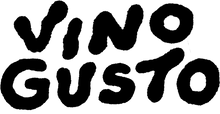

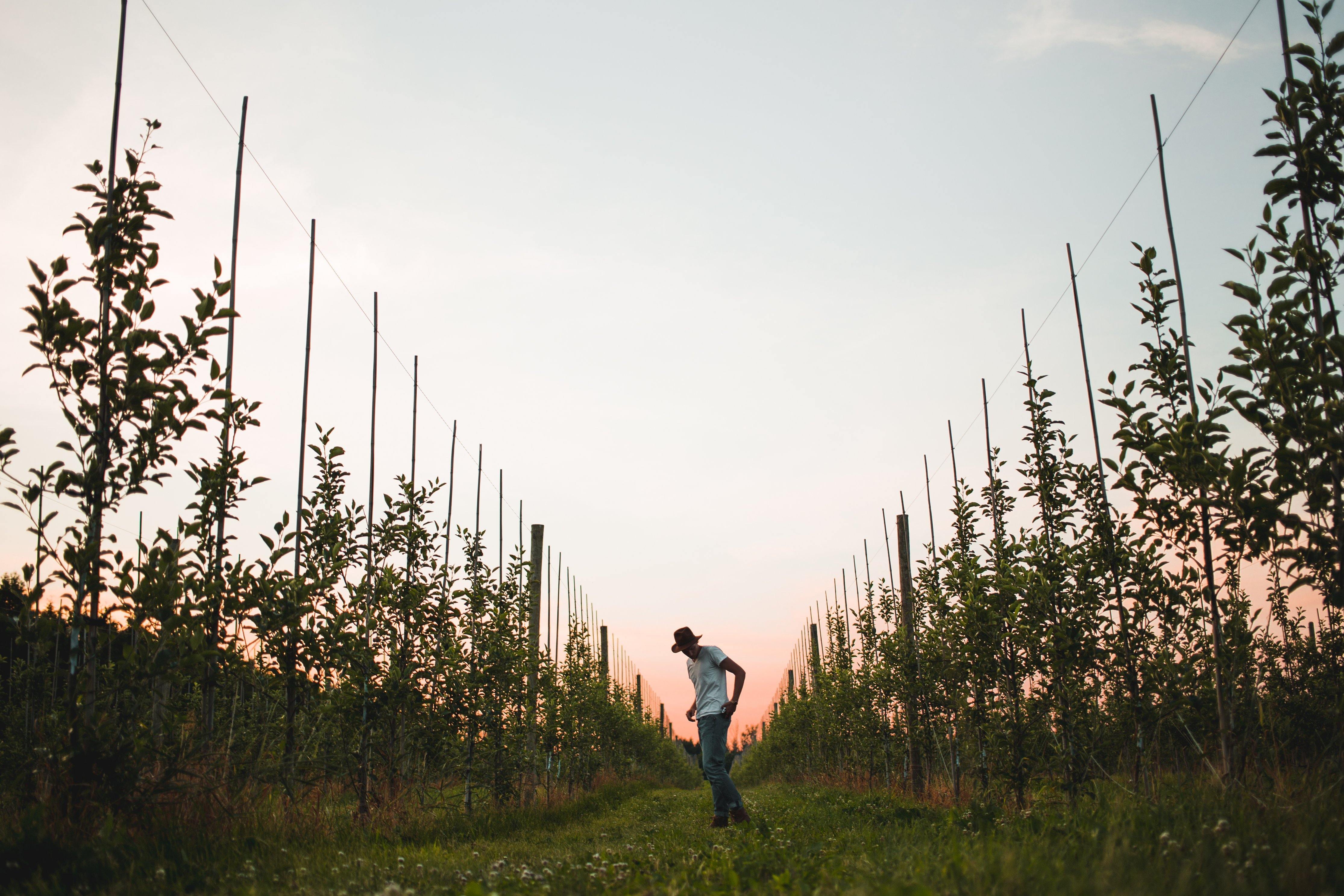
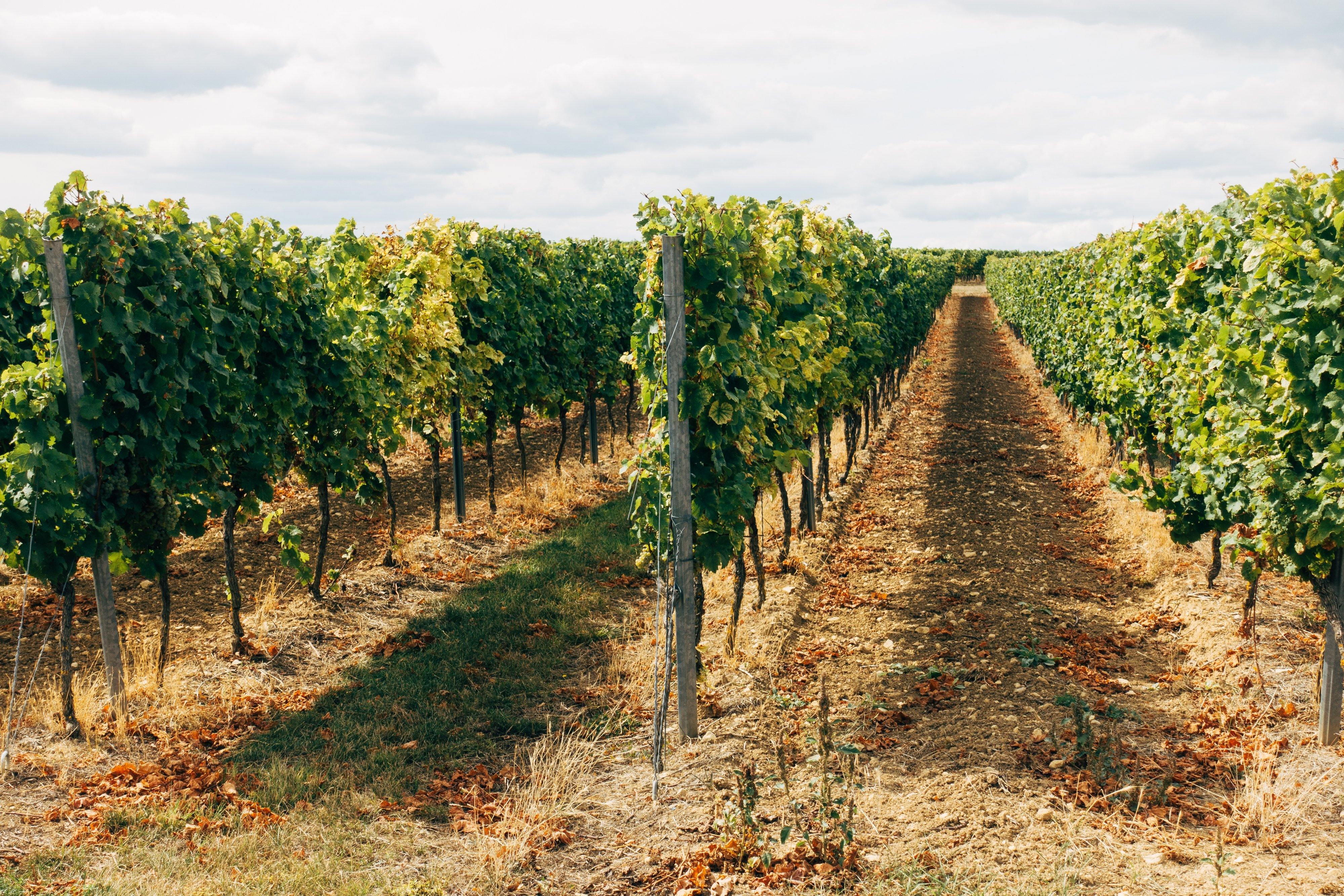
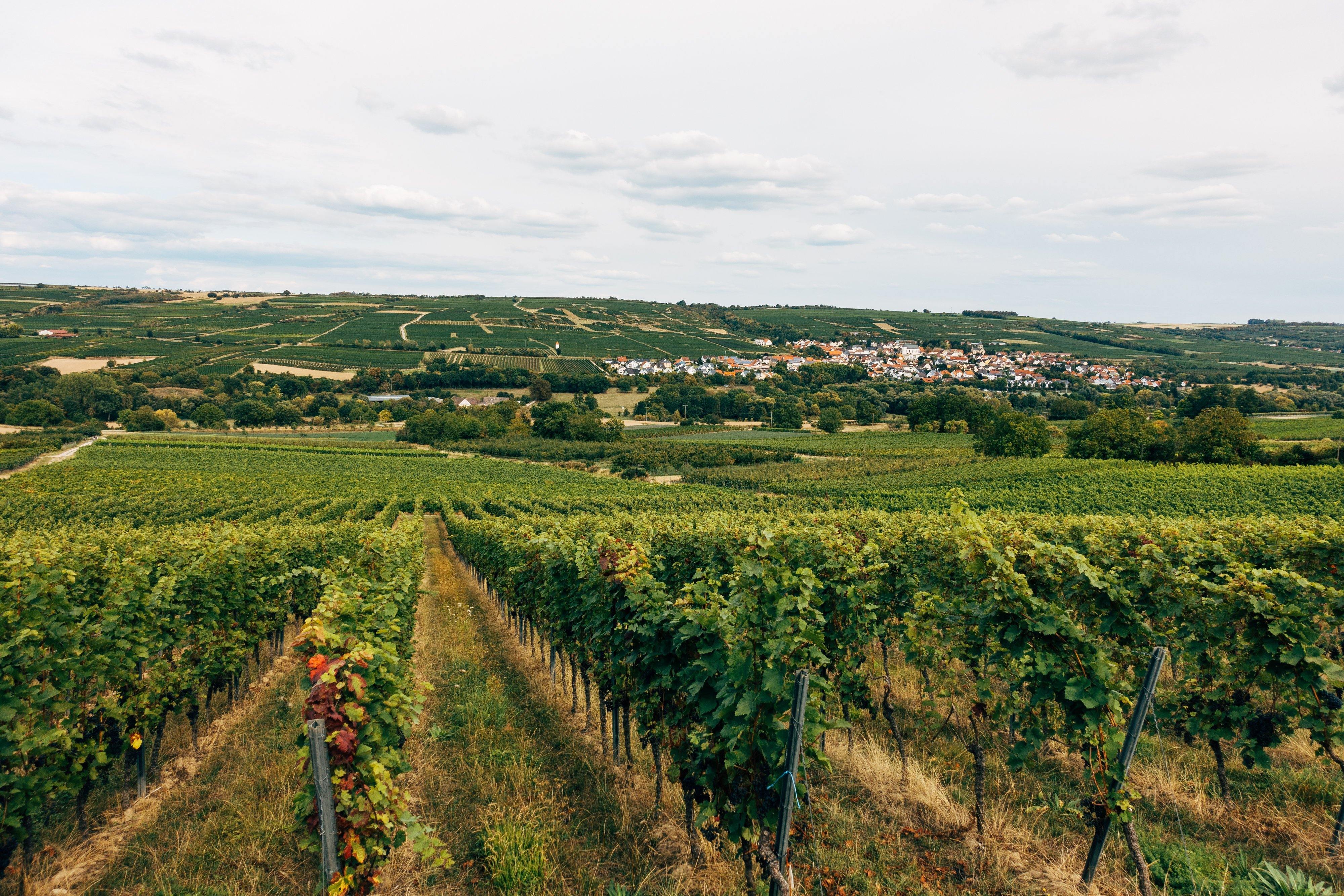
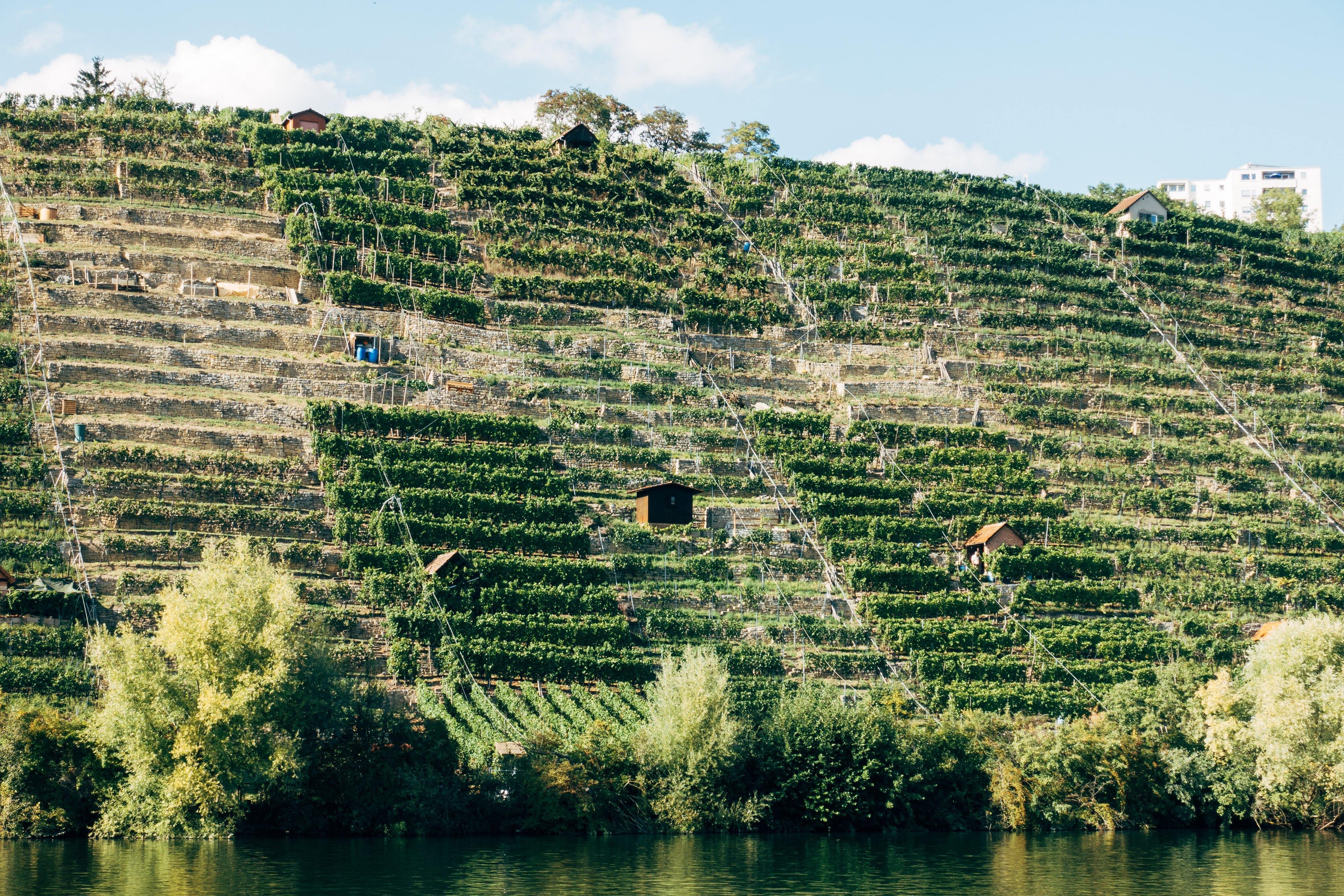
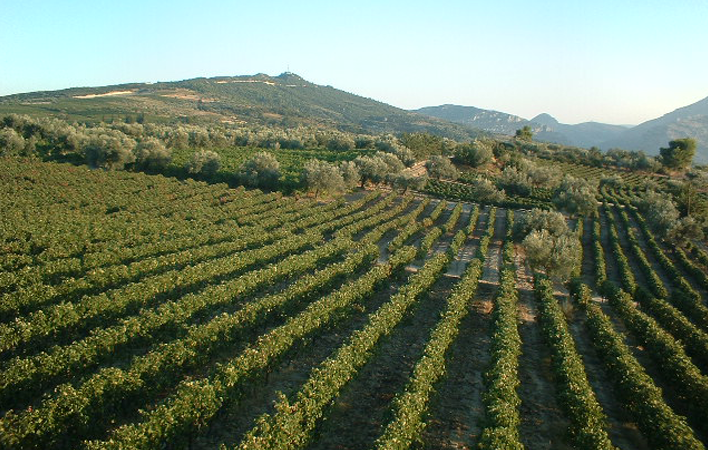
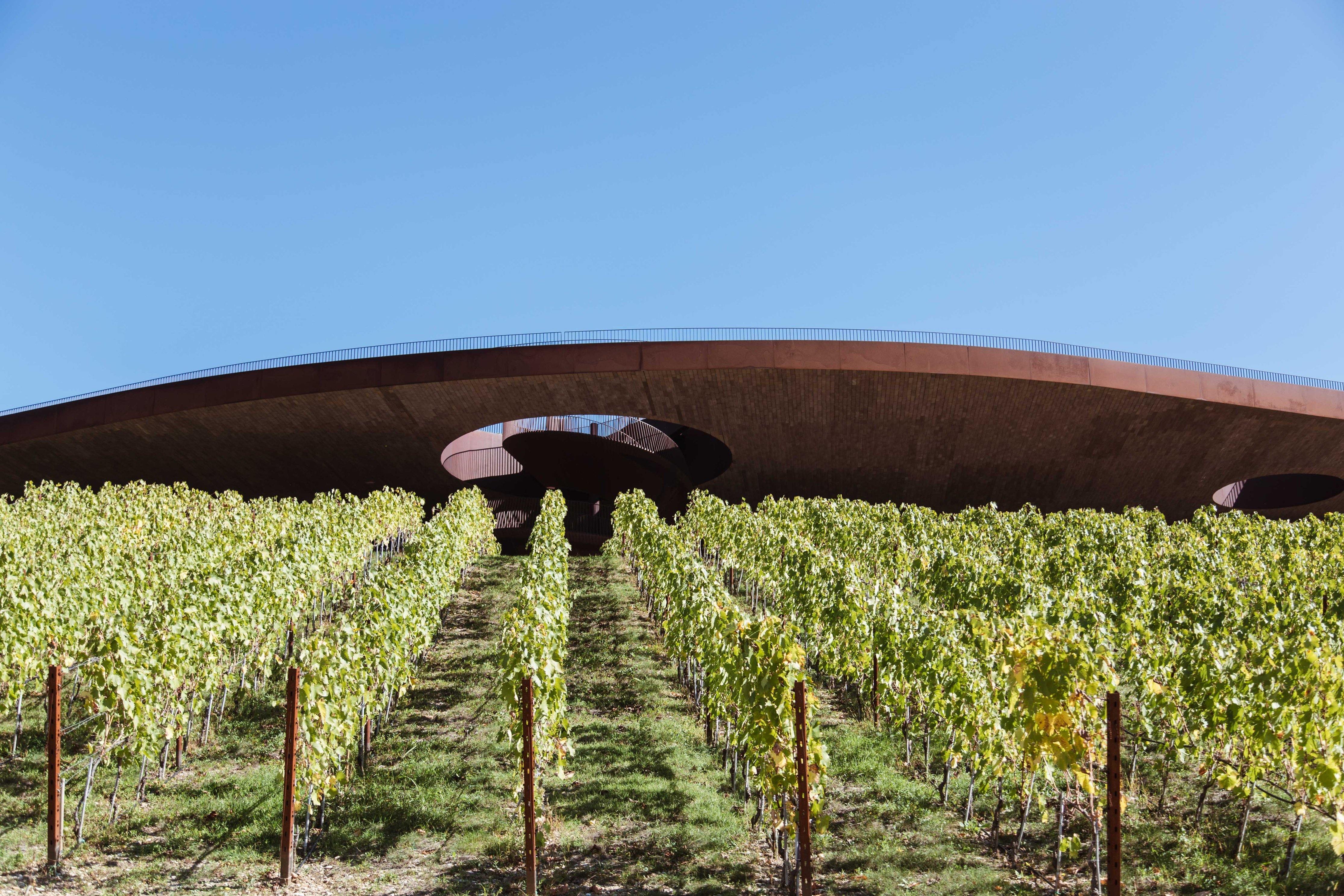
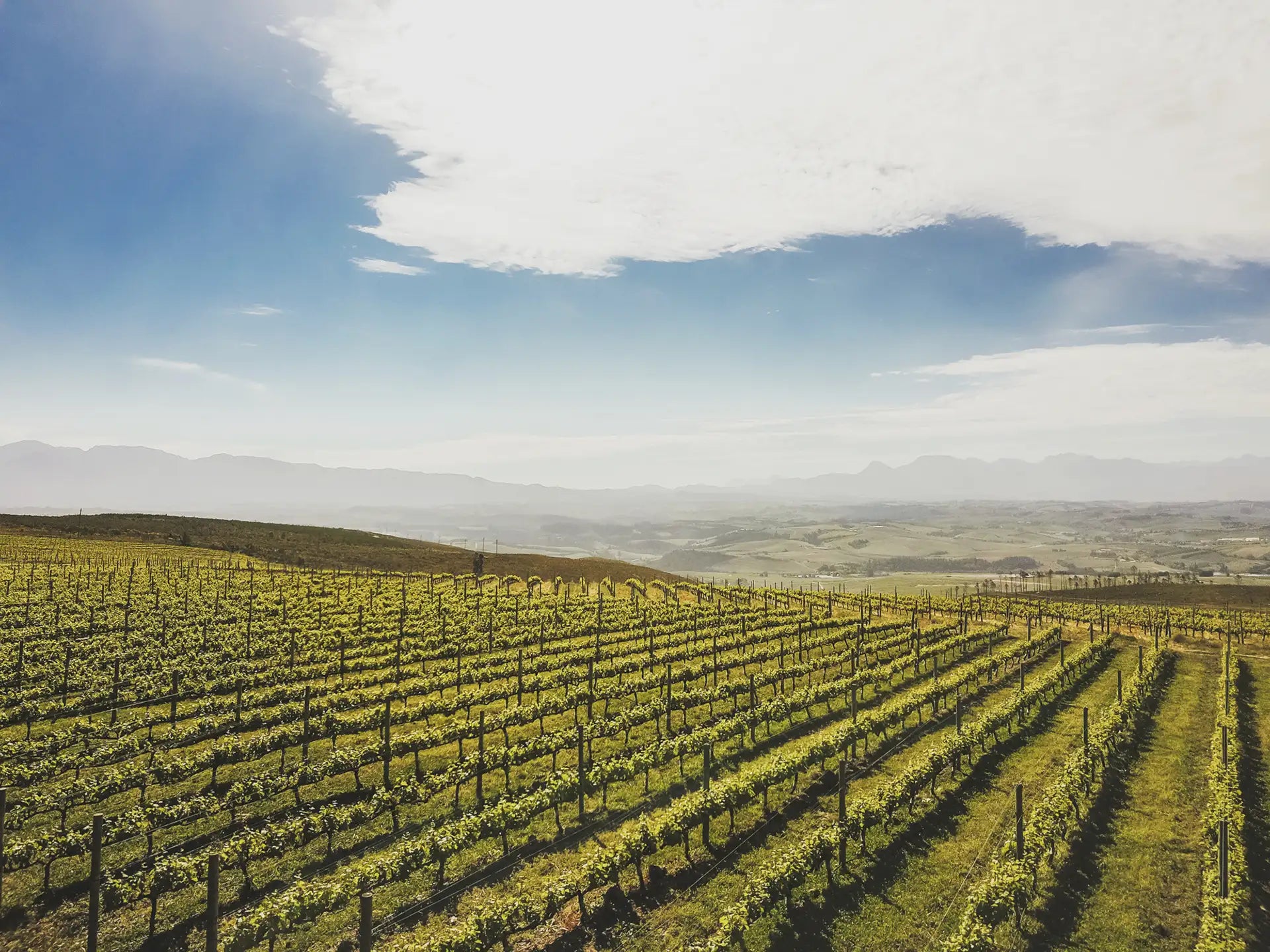
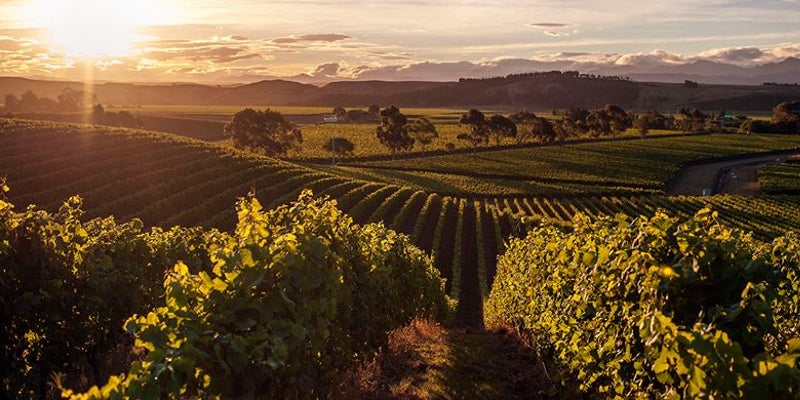
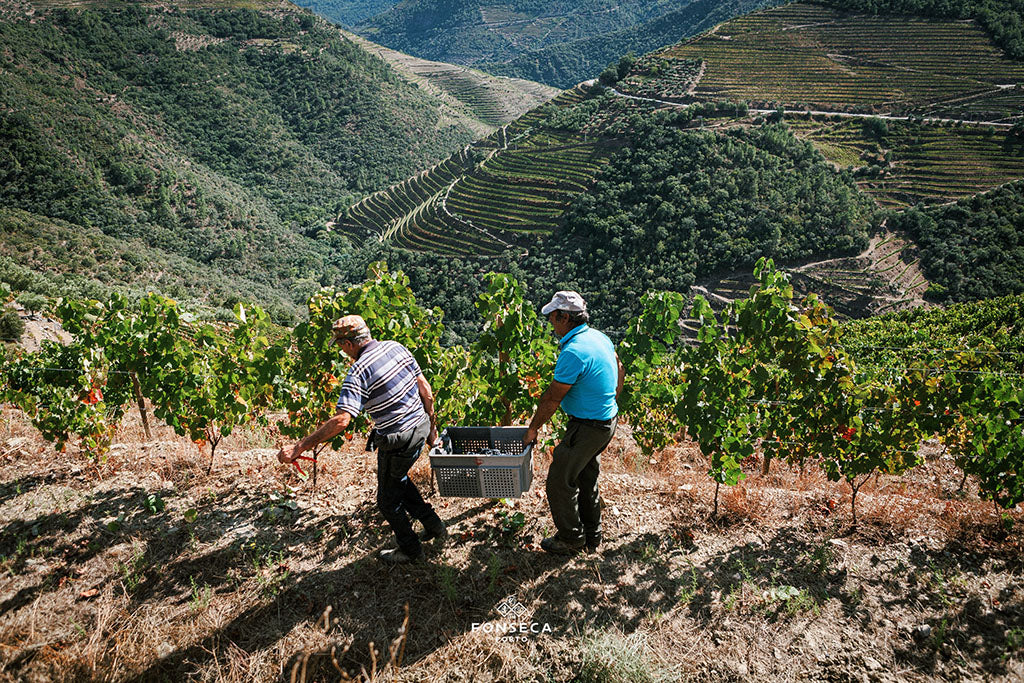
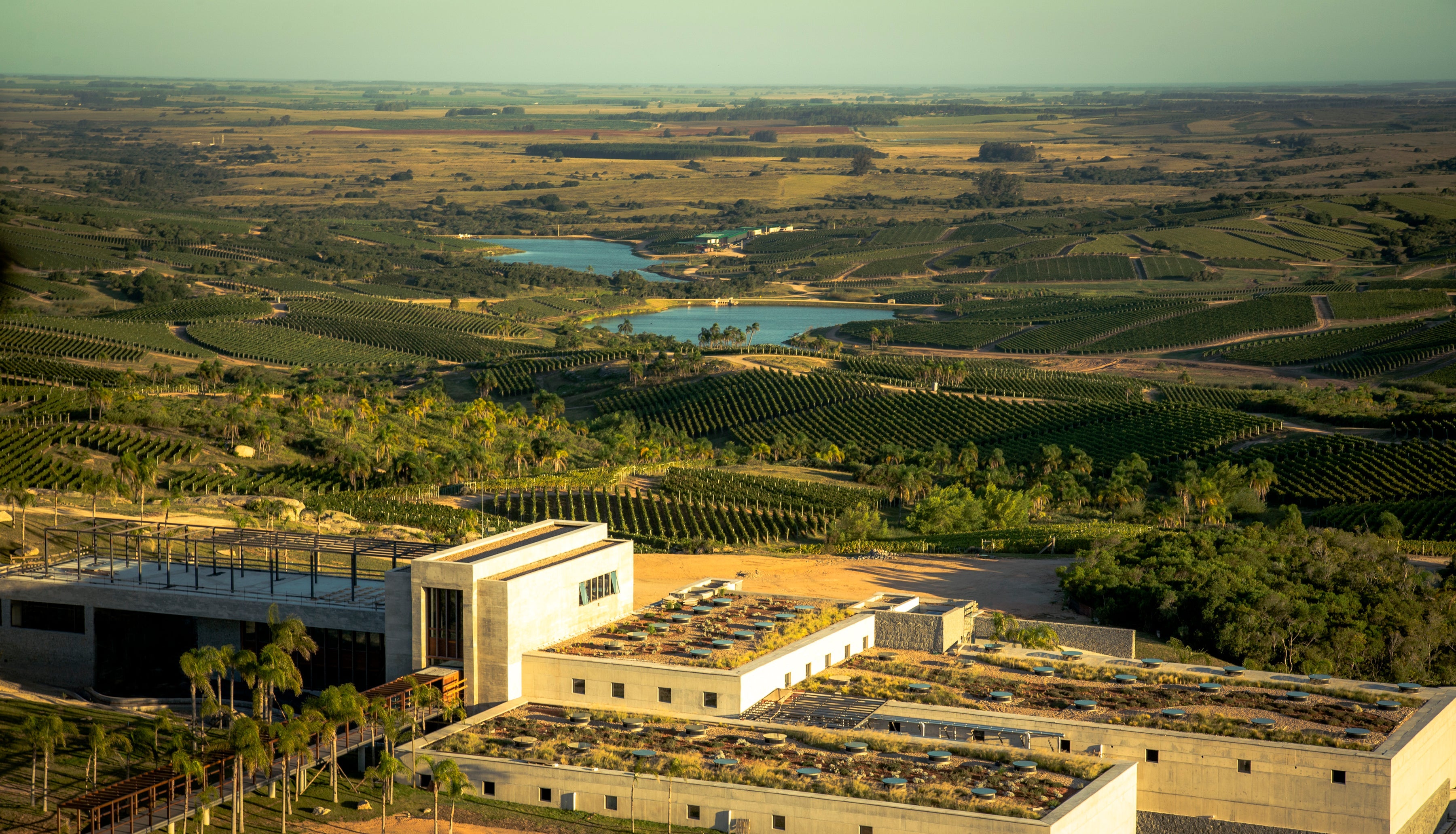
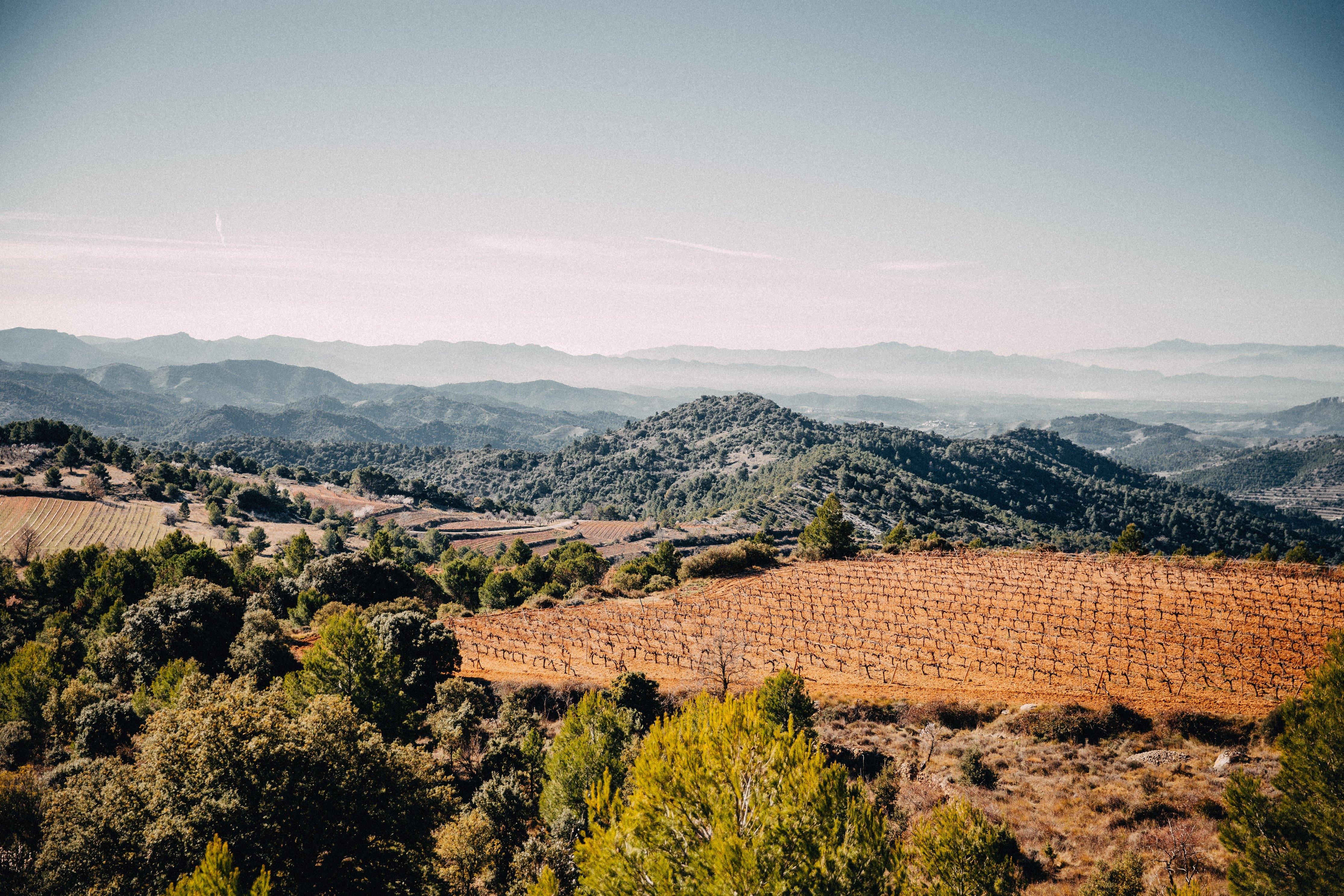
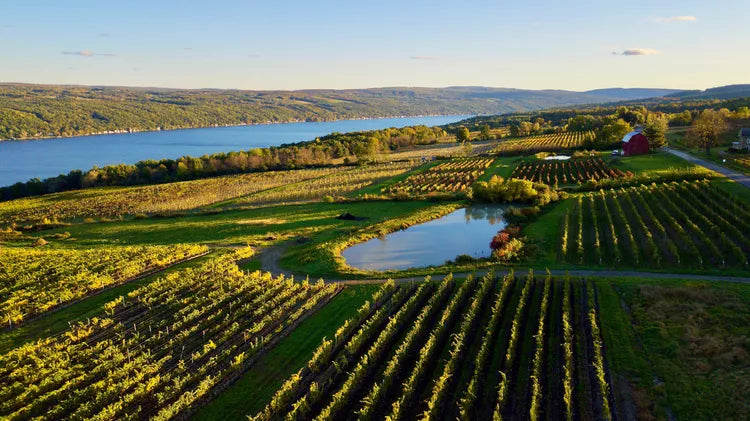

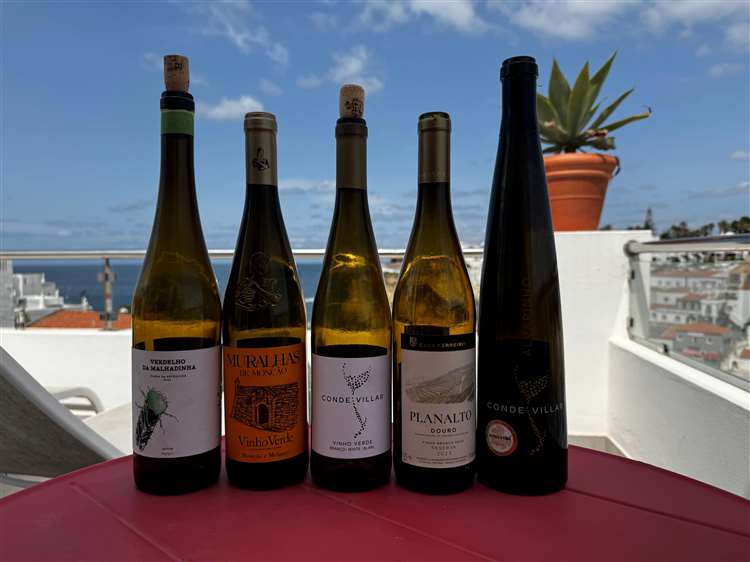
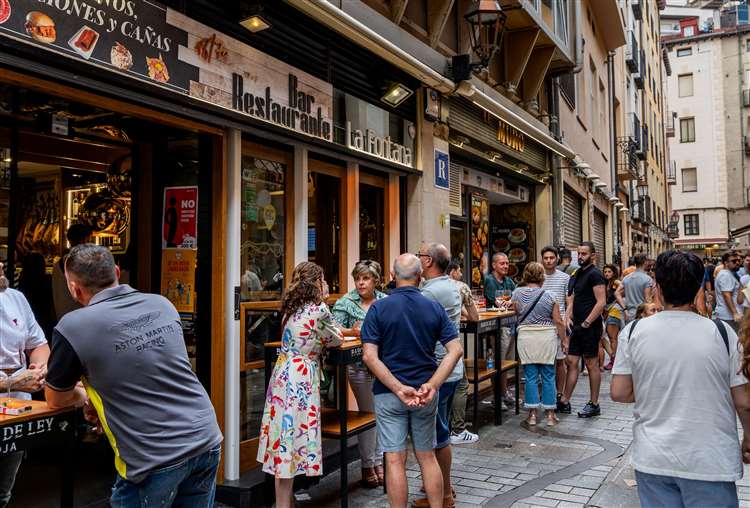

Very informative. Keep up the great work!
Leave a comment